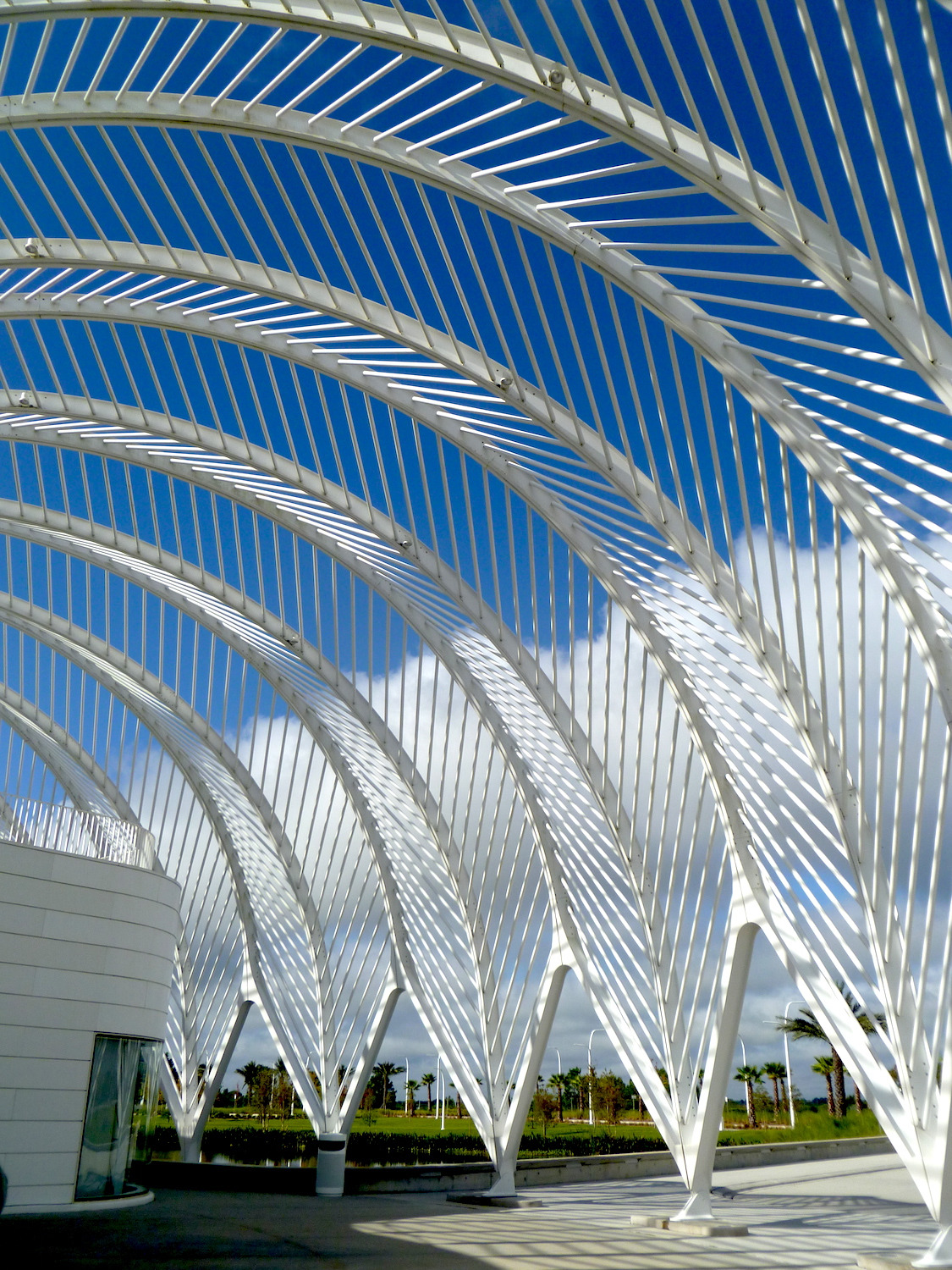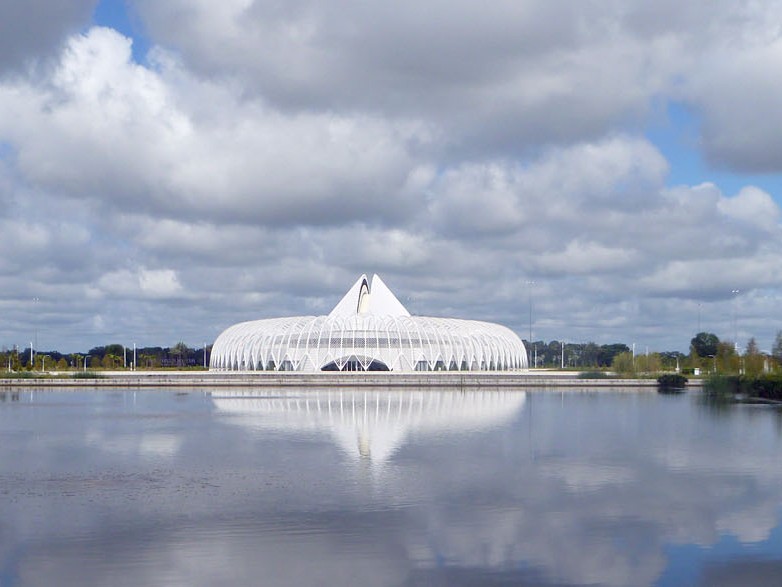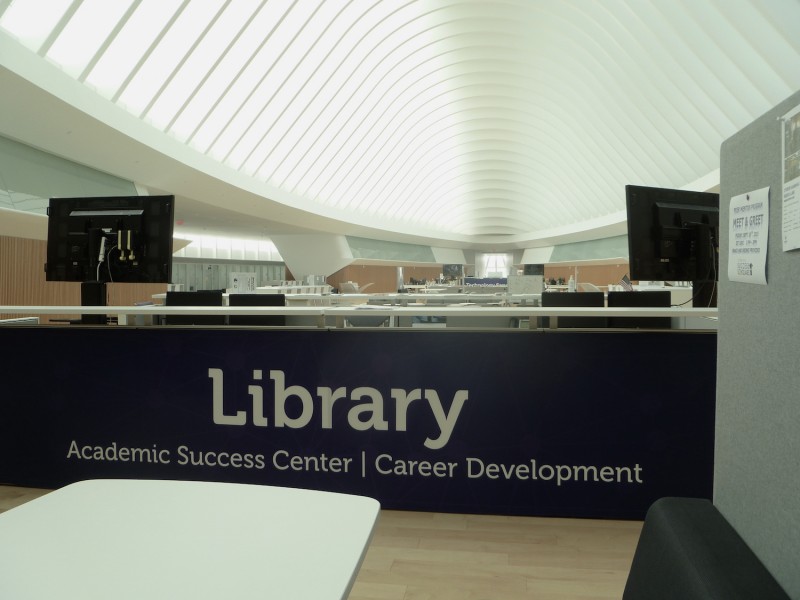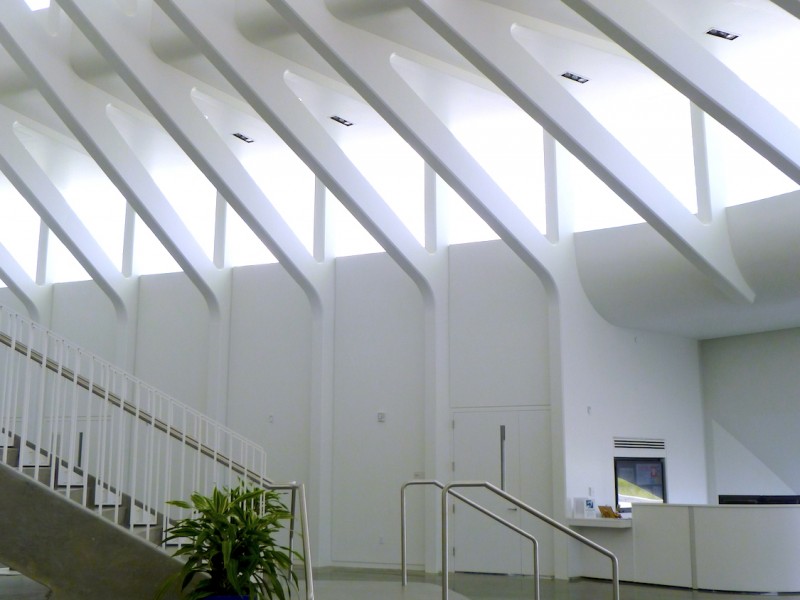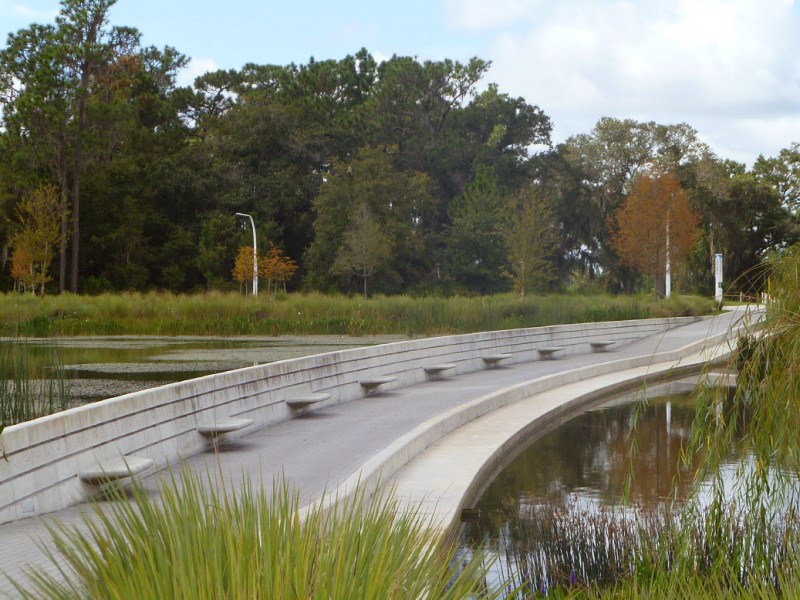These feather-like arbors surround the building.
Two years ago Santiago Calatrava’s white feather-patterned arches stopped traffic on I-4, just outside of Tampa, FL– even if it was just for a nanosecond.
The arches were the first roadside view of the newest Florida institute of higher learning –Florida Polytechnic.
Last week I had a chance to tour the fledging campus. My student tour guide Juan Rodriguez did exactly what Santiago Calatrava hoped an 18-year-old would do upon seeing the building – he took a detour off I-4 and onto the Research Way exit to get a closer look at Florida’s newest university. With that detour, Rodriguez changed the direction of his life. On some level, the architecture gets the credit (or blame) for causing him to change his career trajectory.
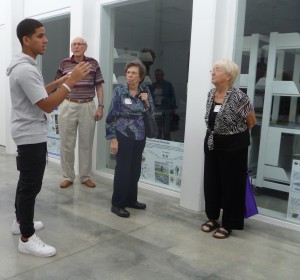
Student Juan Rodriguez talks to a group from the University of Chicago Alumni Association about the technology experiments in progress in one of the five labs located in the center of the building.Rodriguez plans to study artificial intelligence (AI), and he’s a model student the university hopes to attract. His talent and interest in a science,technology, engineering, math ( STEM) career made good economic sense. Rodriguez decided to join the first class of Florida Poly Tech students when the university offered a full scholarship. Score one more student for the year-old Poly Tech; that brings the student population to 922. Florida has 137 institutions of higher learning, so Rodriguez had many colleges to choose from. A new university geared to STEM careers had better have futuristic architecture to grab the attention of a college student such as Rodriguez.
The recent high school grad already had been offered athletic scholarships to other Florida colleges. But he refused those scholarships to be a “pioneer” of a new digital age. Plus he didn’t want to be tied to a classroom or an inflexible schedule anymore. The student guide pointed out that the Innovation, Science, and Technology building is designed to accommodate the leaders of tomorrow. But, the Saturday I was there, not a soul was in sight. Our guides informed us that innovators generally don’t get out of bed before noon. The classrooms are equipped with cameras so the inventors can stay in their PJs and attend class remotely. They’re lab rats and they come alive at night. They hang out cyber gaming, in the Media Lab, or in the Visualization and Technology Collaboration (VTC) Lab.
The flagship, the Innovation, Science, and Technology building, is the only one on campus right now. Natural light fills the halls and when the Florida light is searing, rooftop louvers open or close to control heat and light. Window walls provide light and double as white boards. The whole building is a lab. For example, the students are currently working on a project to take the building off the power grid.
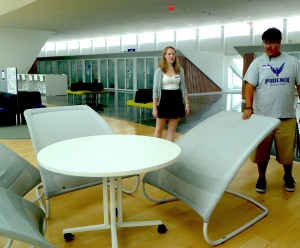
Lindsay Dibble and Miguel Loy show these popular library chairs/ hammocks. The chairs are designed to sink into them; the elastic fabric bounces like a trampoline, so that the seated person springs forward making it easy stand up.
The real-world project represents a philosophy to solve problems by looking at the familiar through a future lens. It could be a simple thing such as rethinking a chair. University President Randy K. Avent saw an unusual one while visiting Google’s headquarters. He was impressed by a gravity-defying hammock that forces students to rethink the concept of a seat supported by four legs. The hammock chair is so comfortable, once you try it, you’ll want one for your home. The importance of seating is carried into the classroom. A limited number of comfortable armchairs are placed in the front row of a lecture hall as an incentive to get the students to come to class early and keep them there.
Lakeland now has two iconic colleges and they span 75 years of architectural styles. In 1939, Frank Lloyd Wright designed Florida Southern, while Florida Polytechnic opened last year (2014). The Florida Southern campus is truly iconic; the Polytechnic campus is calling itself iconic even though it is only a year old. Calatrava’s Innovation, Science, and Technology building may be well on the way to iconic. But, I think it’ll take another 50 years or so to know for sure.
